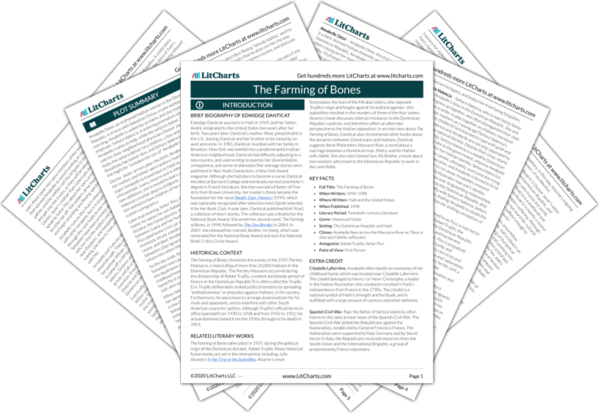The dance further reinforces Amabelle’s realization that grief and hope are intertwined. Although the dance comes from a sense of hope, it nevertheless draws attention to the dead, who are missing and cannot dance. Furthermore, Father Romain has recovered from his amnesia. His recovery is a symbolic representation of how memory overcomes even the most oppressive of forces, such as prejudice and violence. At the same time, however, Father Romain’s memories have also transformed him in a less positive way; remembering the trauma he experienced now makes it impossible for him to maintain his former religious life.
